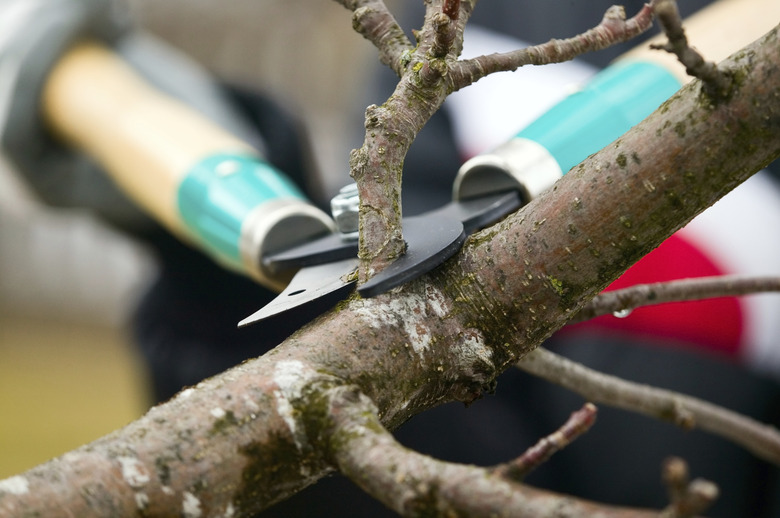How To Wrap A Bundle Of Tree Limbs
We may receive a commission on purchases made from links.
While your community's trash service program may pick up yard waste, it probably doesn't accept loose, heavy, or long tree limbs and branches. Instead, it expects branches to be neatly tied in bundles of a specific size. Each region has its own rules for tying up tree limbs designated for yard waste, but in most cases, the bundles should be of manageable size and tied neatly so the branches don't easily fall out upon pickup. If it's easy for you to carry the bundle, it's most likely easy for the curbside pickup crew too.
Tree-Limb Bundling Basics
Tree-Limb Bundling Basics
While your city may have different size or weight limits for yard-waste tree limbs than the next town over, common sense applies. For general guidelines, cut or snap the tree limbs so they're no more than 36 inches long and less than 3 inches in diameter. Remove twigs or branches shooting off of each tree limb. For any twig or branch that's large enough to go into the bundle, add it to the pile. Short twigs narrower than a pencil may be placed in yard waste bags.
The type of string or twine used to bundle branches matters. Choose a natural fiber, such cotton or jute twine; the rougher the texture, the better, as it grips itself and makes knot-tying easier. Jute garden twine is ideal for the job, as it's sold in large rolls and comes in handy for tying back shrubs or holding plants on a trellis too. Some yard-waste programs actually require using jute or other natural fibers since these break down over time and aren't harmful to the environment.
To make a bundle of tree limbs, cut about 10 feet or so of jute from the roll, setting the cut piece straight on the ground. Start bundling the cut sticks across the twine at a 90-degree angle from it. Once you have a stack 10 inches to 12 inches wide, tie the twine tightly around the sticks. Trim the twine as desired, or wrap it around the sticks again closer to one edge of the pile, and tie another knot. Depending upon the length and weight of your branch stack, you may need two to three pieces of twine to secure the bundle; the goal is to make it as easy to carry as possible.
Common Yard-Waste Guidelines
Common Yard-Waste Guidelines
While each locale sets its own specific guidelines for branches placed out with yard waste, they're generally similar. Read your community's trash and yard-waste pickup web page for specific details. For instance, some cities allow tree limbs of up to 4 feet long in the bundles, while many suggest 3 feet instead — which means 3 feet is a good general length for each bundle if you can't find rules for your own community. Some areas have weight guidelines suggesting 40 or 50 pounds for each bundle. If you can carry it with ease, it's probably within the allowable weight range.
Many areas have specific rules for the diameter of each branch put out for pickup, with a limit of a 3 inches diameter. This ensures the wood is easier for the city to chip or otherwise use once the yard waste arrives at its destination. Also look for rules as to how many bundles may be placed out per week, as some cities even set limits for the amount of yard waste picked up at one time at each residence.
If you have really large tree limbs too thick for the yard-waste program, contact the city for options. Also check your local social media groups, as some people in your community may want the branches for firewood or crafty projects.
